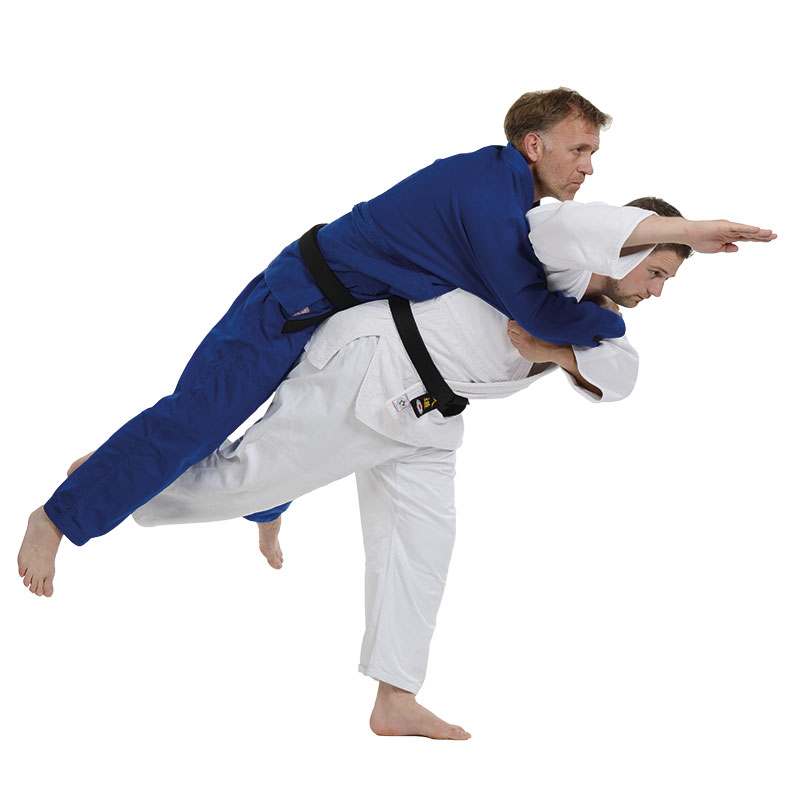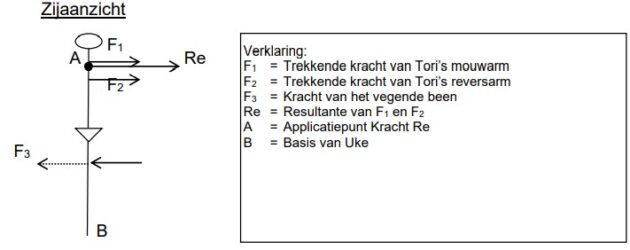Uchi-mata-makikomi 内股巻込
Inner Thigh Wraparound Throw
Classification: Sacrifice Technique (Sutemi-waza) – Side (Yoko-sutemi)
Group: Shinmeisho no Waza (Newly Accepted Techniques by the Kodokan)
Description
A powerful variation of the classic Uchi-mata (inner thigh throw), this technique turns a conventional throw into a fully committed sacrifice. After initiating the standard Uchi-mata, tori releases their collar grip and rotates sharply to the left, wrapping their right arm over and around uke’s upper body or arm. This wrapping motion pulls uke into tori’s body. Tori then continues the turning motion and deliberately falls forward or sideways, driving uke down in a spiralling arc.
This throw is ideal when the standard Uchi-mata is resisted or partially blocked—tori transitions into a makikomi (wraparound) to overcome uke’s defense using body commitment and rotational force.

Biomechanics of Uchi-mata-makikomi
-
Type: Couple (Re + F3)
-
Force components:
-
Re: Uke’s upper body is pulled forward (mouw- of reverszijde).
-
F3: Tori sweeps uke’s inner thigh from the inside, disrupting the support point.
-
-
Key element:
After initiating the throw, tori adds a forward sacrifice by wrapping uke’s body and falling with it—this increases torque and momentum, turning a partial attack into a decisive scoring throw. -
Centrifugal force:
Like many makikomi throws, uke is projected in a circular path over tori’s body.

Did you know?
Makikomi throws like this one demand full commitment. Because you release one grip and turn your back to uke, you’re momentarily exposed—making precision and timing crucial. Uchi-mata-makikomi is often used in high-level competition as a tactical response to strong defensive posture or as a follow-up when uke resists a classical Uchi-mata.
The suffix “makikomi” literally means “wraparound”—and in Japanese culture, it often conveys the idea of drawing something into your movement. In judo, that means wrapping your opponent into your fall and using that momentum to finish the throw.
This technique showcases the beauty of ju (柔)—adaptability. When uke stiffens or resists, tori doesn’t fight force with force but flows into a new path to victory.